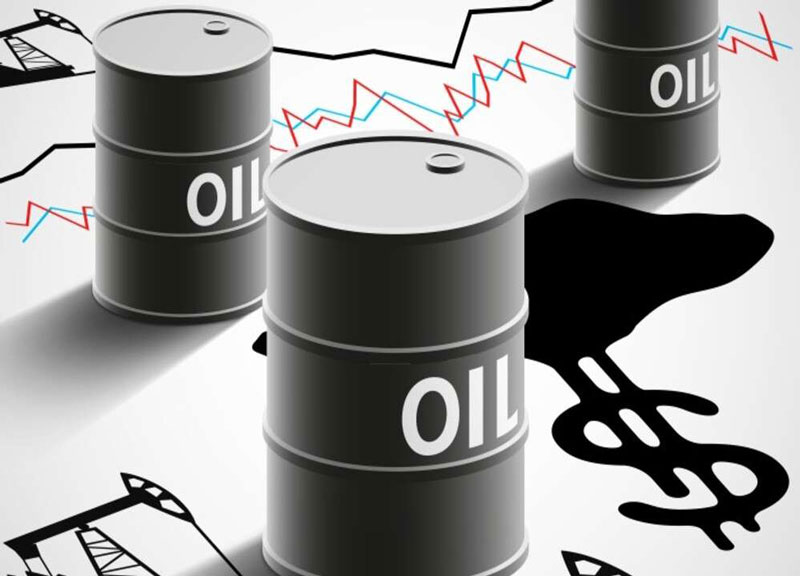The 9th International Symposium of the Organization of the Petroleum Exporting Countries (OPEC) was held in Vienna, the capital of Austria. During the meeting, the flagship report "World Oil Outlook 2025" was released, which outlined an optimistic but challenging picture for the global oil market. Compared with OPEC's optimism, the oil demand forecasts of the International Energy Agency and the U.S. Energy Information Administration are more conservative. As heavyweight energy agencies, all parties have different judgments on the future balance of oil supply and demand, oil price trends and energy transformation trends. Against the backdrop of a slowing global economy, tense geopolitical situations and accelerated energy transformation, there are many different opinions on where the global oil market is going.

The report predicts that global oil demand will continue to rise, reaching an average of 123 million barrels per day by 2050, with the main consumption growth coming from the industrialization and urbanization of developing countries. At the same time, the report pointed out that by 2050, oil demand in countries outside the Organization for Economic Cooperation and Development (OECD) will increase by 28 million barrels per day, of which China and India are the main growth points. It is expected that China's demand will increase by 210,000 barrels per day this year, and India's demand will increase by more than 300,000 barrels per day. In contrast, due to the gradual popularization of electric vehicles and energy transformation, the growth of fossil energy demand in OECD countries has slowed down, and the total oil demand is expected to increase by only 200,000 barrels per day this year. However, the report emphasizes that oil is still irreplaceable in the fields of transportation, industry and medical care, and its main energy status is difficult to shake in the short term.
The International Energy Agency recently predicted that the average global oil demand growth this year will be 704,000 barrels per day, and will increase to 722,000 barrels per day next year. The U.S. Energy Information Administration predicts that global oil demand will increase by 800,000 barrels per day this year and 1.1 million barrels per day next year. Both agencies believe that the global economic slowdown and trade tensions may curb demand growth, especially the U.S. government's tariff measures may weaken the demand potential of emerging markets in Asia, which may bring significant uncertainty to the global macroeconomy.
In terms of global oil supply, the production policy of OPEC+, which consists of OPEC members and non-OPEC oil-producing countries, is crucial to market balance. OPEC predicts that crude oil supply will increase by 1.6 million barrels per day in 2025, with the main sources of increase being the United States, Canada and other countries. The sharp increase in crude oil production in non-OPEC+ countries is reshaping the market structure, and OPEC+'s production reduction strategy seems to be caught in a dilemma between maintaining oil prices and protecting market share.
OPEC+ has decided to gradually lift the voluntary production cut plan of 2.2 million barrels per day since November 2023, and has raised its production target twice this year. However, countries such as Kazakhstan and the United Arab Emirates have been increasing production, which has greatly reduced the effectiveness of the organization's production cuts. The International Energy Agency warned that the accelerated production increase of OPEC+ is likely to exacerbate the tension of oversupply, resulting in a global oil market surplus of 730,000 barrels per day this year. If OPEC insists on increasing production, the surplus could reach 1.4 million barrels per day. On July 11, the International Energy Agency released its monthly crude oil market report, raising its forecast for total crude oil supply in 2025 from 104.9 million barrels per day to 105.1 million barrels per day.

The intensifying geopolitical conflicts in the Middle East have led to sharp fluctuations in international oil prices.
According to OPEC analysis, in May this year, the average price of the OPEC Reference Basket (ORB) was $63.62 per barrel, London Brent crude oil futures were $64.01 per barrel, and West Texas Intermediate (WTI) was $60.94 per barrel, down 7.8% from the previous month, mainly due to increased global oil inventories, slowing demand, and the decision of OPEC+ to increase production. However, in June, the global oil market changed its unilateral downward trend, and geopolitical risks once pushed up oil prices, which are currently hovering around $70 per barrel. The International Energy Agency predicts that the average price of Brent crude oil futures will be $65 per barrel in 2025, while the U.S. Energy Information Administration predicts it will be $69 per barrel, and it may fall to $58 per barrel in 2026.
At present, factors such as inventory pressure and the general bearishness of market speculators have suppressed the rise in international oil prices. According to relevant surveys, U.S. shale oil producers need oil prices of $65 per barrel to make profits, and too low oil prices may lead to a 9% reduction in capital expenditures by U.S. oil companies. In addition, sanctions against Russia, Iran and Venezuela also bring great uncertainty. The short-term volatility of oil prices will continue to be affected by the geopolitical situation and the "OPEC+" production policy, but the oversupply situation may limit the long-term upside.
Energy transformation is a long-term challenge for the oil market. OPEC stressed that oil will still dominate before 2050, but it is also necessary to develop a new "all-inclusive" energy path. According to the International Energy Agency, oil demand will peak before 2030, and electric vehicle sales will reach 20 million in 2025, accounting for a quarter of global car sales. The U.S. Energy Information Administration pointed out that the green policies of OECD countries will accelerate the decline in oil demand, while the traditional fuel dependence of non-OECD countries will be difficult to change in the short term.
Overall, the global oil market in 2025 will continue to evolve under the intertwined influence of supply and demand imbalance, uncertainty in global economic recovery and energy transformation, and geopolitical conflicts in the Middle East may become a key variable in price fluctuations.

%20--%3e%3c!DOCTYPE%20svg%20PUBLIC%20'-//W3C//DTD%20SVG%201.1//EN'%20'http://www.w3.org/Graphics/SVG/1.1/DTD/svg11.dtd'%3e%3csvg%20version='1.1'%20id='图层_1'%20xmlns='http://www.w3.org/2000/svg'%20xmlns:xlink='http://www.w3.org/1999/xlink'%20x='0px'%20y='0px'%20width='256px'%20height='256px'%20viewBox='0%200%20256%20256'%20enable-background='new%200%200%20256%20256'%20xml:space='preserve'%3e%3cpath%20fill='%23FFFFFF'%20d='M194.597,24.009h35.292l-77.094,88.082l90.697,119.881h-71.021l-55.607-72.668L53.229,232.01H17.92%20l82.469-94.227L13.349,24.009h72.813l50.286,66.45l58.148-66.469V24.009z%20M182.217,210.889h19.566L75.538,44.014H54.583%20L182.217,210.889z'/%3e%3c/svg%3e)